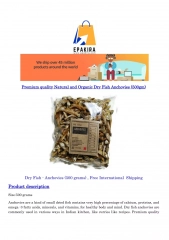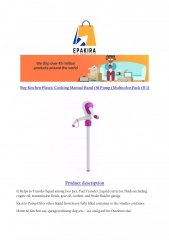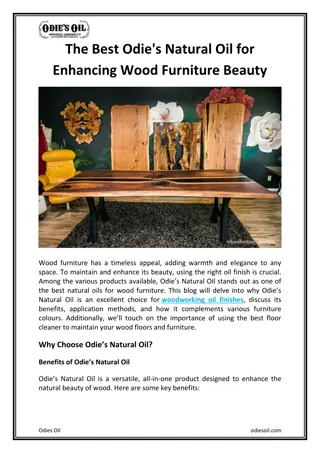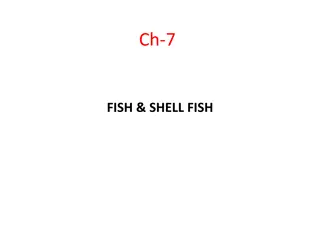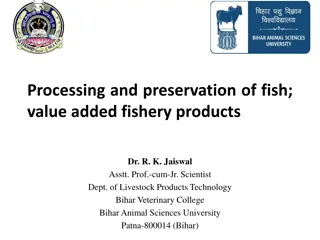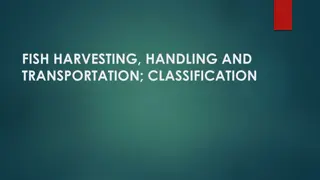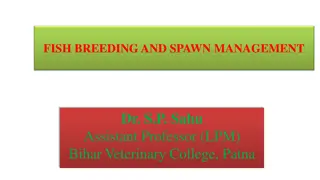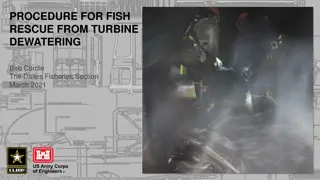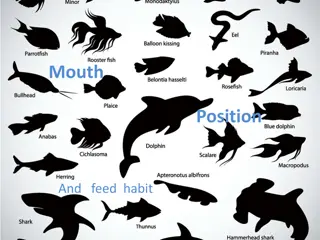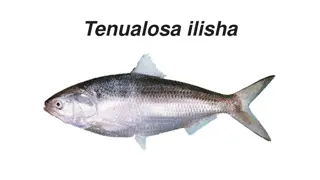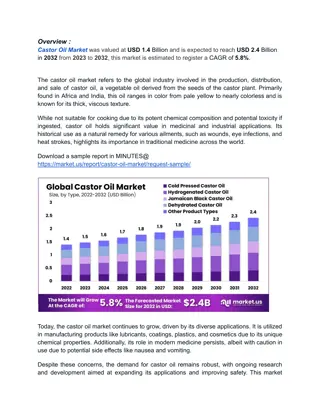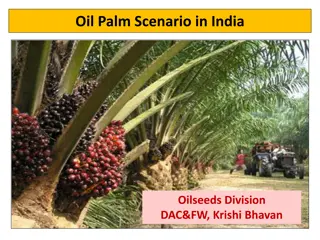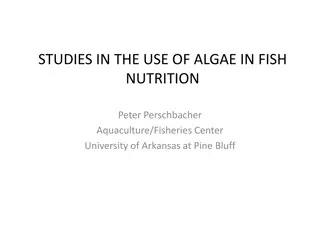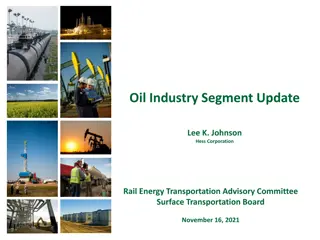
Effective Environmental Odor Solutions for Industrial Plants
Discover the challenges of environmental odor in fishmeal, fish oil plants, and more. Learn about odor perceptions, European odor standards, odor testing methods, common smelling components, and effective environmental solutions for odor control.
Download Presentation

Please find below an Image/Link to download the presentation.
The content on the website is provided AS IS for your information and personal use only. It may not be sold, licensed, or shared on other websites without obtaining consent from the author. If you encounter any issues during the download, it is possible that the publisher has removed the file from their server.
You are allowed to download the files provided on this website for personal or commercial use, subject to the condition that they are used lawfully. All files are the property of their respective owners.
The content on the website is provided AS IS for your information and personal use only. It may not be sold, licensed, or shared on other websites without obtaining consent from the author.
E N D
Presentation Transcript
Jimco A/S Jimco-Group environmental odor presentation by: Founder & CEO Jimmy K. Larsen
Environmental odor problems in Fishmeal Fish oil Aqua feed Rendering plants Etc.
Odor Perceptions and Intensity 1. How does the human nose react to odor 2. How much do we react on Extremely Strong Very Strong Strong Perceptible Weak Very weak No odor
European Odor standards CEN and EN 13.725 Norm About odour measurements in general Basis The Environment Council has prepared a guide about the limitation of obnoxious smells from factories, Guidance No. 4/1985. The guidance among other things describes the demands on the taking of samples, the measuring equipment and the test panel. Within the framework of the European Standardisation Organisation CEN a standard concerning the collecting of samples and the analysing of odour emissions is being prepared. This standard, will base the foundation of future demands for odour measurements in Denmark and form the base of a possible new guide. The odour substance concentration is determined by subjecting a smelling panel to the odour sample in different concentrations (rarefied with pure air). The goal is to determine the degree of rarefaction making it just possible for 50% of the panel to detect the odour in the rarefied sample.
An odour test from an emission source is made in the following way: A sample bag is placed in an airtight container and is connected to the emission point by a short Teflon hose. The container is slowly emptied of air whereby the sample bag is filled with odour sample. The odour sample is analysed by an odour test panel within 30 hours. The odour test panel is selected for its ability to detect the odour threshold value of n-butane correctly, which is according to the specifications of the CEN standard. The odour test panel, which consist of at least six persons, is tested towards standard substances immediately before the test.
Smelling components Ammonia High concentration in rancid fish meal batches Trimethyl amines Typical fish meal odor Hydrogen sulphide Rotten eggs Mercaptans Human nose can detect small concentrations Non condensable gasses Rendering plants Be aware that dust will contribute to odor problems
Environmental Solutions Solution: Cleaning efficiency Chimney 0% (only Dilution) Bio or Chemical scrubber 30- 50% Bio Filter 60-85% Photo oxidation (FLO Technology) 80-98% RTO/RCO Thermal oxidizer 90-98% Activated Carbon 90-98%
Important parameters when sizing a Solution 1. Type of air to be treated? 2. Product manufactured? (Boiled/fried/cooked)? 3. High humidity of the air to be treated? 4. Presence of vegetable or animal oils in the process? 5. Temperature? 6. Presence of dust in the air? 7. Treatment to be divided in more than one unit? 8. Treatment to be assembled in one exhaust? 9. Compounds to be eliminated after treatment due to authority demands ? 10.OU/m3 authority demands at neighbors next to the company? 11.Odor analyses made? 12.Any OML spreading calculations available for this particular company? 13.Airflow to be treated? 14.Physical conditions? (Space available for a treatment unit?) 15.Reaction time? (Is it necessary to make an extension in order to achieve a reaction time of approx. 2 sec.?) 16.Ammonia or hydrogen sulphides present in the air to be treated? 17.Height of existing exhaust? 18.Any prescribed maximum exhaust height in local district plan?
Chimney: Efficiency 0% Chimney Dryer/Cooler Cyclone/filter Not really allowed if you can destruct your pollution
Bio or Chemical Scrubber: Efficiency up to 30% Advantages: 1. Removal of ammonia 2. Removal of dust Disadvantages: 1. Wastewater 2. Operation cost 3. Low efficiency Chimney Dryer/Cooler Cyclone/filter Scrubber
Bio Filter: Efficiency 70-95% Advantages: 1. Removal of odor 2. Investment cost Disadvantages: 1. Need to be feed equal 2. Takes lot of valuable space 3. Need to be watered Dryer/Cooler Cyclone/filter Scrubber Bio Filter
Photo Oxidation: Efficiency 80-98% Advantages: 1. Removal of odor 2. Low Investment cost 3. Running cost 4. Space needed 5. Safety Disadvantages: 1. Not easy to find Chimney Dryer/Cooler Cyclone/filter Scrubber Photo oxidation
Thermal oxidizer: Efficiency 90-98% Advantages: 1. Removal of odor Disadvantages: 1. High investment cost 2. Makes NOX & CO 3. High running cost 4. Maintenance Chimney Dryer/Cooler Cyclone/filter Scrubber RTO/RCO Thermal oxidizer
Activated Carbon: Efficiency 70-95% Advantages: 1. Removal of odor Disadvantages: 1. Adsorption instead of absorption 2. Maintenance 3. Running cost Dryer/Cooler Cyclone/filter Scrubber Carbon Filter
Jimco Group Scope of Supply Consultancy service Measuring of emissions in co-operation with licensed laboratories Design and engineering of technical solutions Supply of Environmentally correct technology Testing before installation Running in and documentation of completed project Training in operation and maintenance
Thank you very much - for your attention www. Jimco.dk

